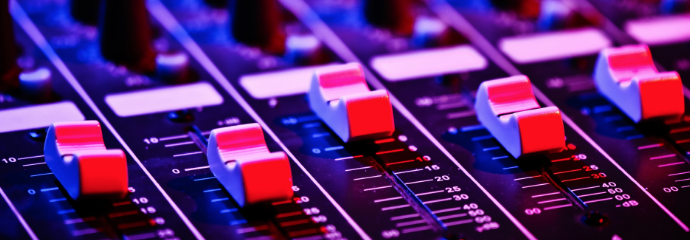Electronic instruments and music technology in general has helped composers and musicians create many musical sounds in a variety of situations:
- Film composers can create entire orchestras and choirs using computer software
- MIDI instruments like the Malletkat and electronic drum sets allow a percussionist to become a string orchestra
- Dancers can "compose" music through their dance movements in a live concert through sensors using MIDI data
- Composers can have a computer transcribe their music and send copies to an orchestra with a single click of the button
- Indie musicians can share their newest album without having to worry about an agent through the internet
- Music students can listen to music from all over the world without leaving their home
- Musicians can collaborate internationally with musicians across the ocean
- Music teachers can create fun music activities with music education software
- Difficult to find instruments like bagpipes or full organs can be played on a keyboard in live performance
- Video, video games, and audiovisual technology is combined with electronic music in a variety of hybrid arts.
Where does classical music end and technology begin?
You can read more about the importance of Music Technology in this article: http://iawm.wordpress.com/2010/01/23/in-defense-of-music-technology-adapt-or-die/
Eric Whitacre Virtual Choir Piece: http://www.youtube.com/watch?v=D7o7BrlbaDs
Interactive MIDI Sequencer using MaxMSP
http://www.youtube.com/watch?v=0O70FrnH2JU&feature=related
Turing Machine Opera: http://www.youtube.com/watch?v=0jPlIvoS1t8&feature=BFa&list=PL270BA342E9103AD8&index=10
The Manekin "I'm Table Live": http://www.youtube.com/watch?v=xdcEJFHId1I&feature=related
Synthesized work: http://www.youtube.com/watch?v=Zh0jZisqUeg
iPhone Orchestra: http://www.youtube.com/watch?v=ADEHmkL3HBg
laptop orchestra: http://www.youtube.com/watch?v=dUeBXRWg0pA
Musical Tesla Coils: http://www.youtube.com/watch?v=VEj6nSpD778&feature=related
Here is a sample of a vocal synthesizer singing using Vocaloid: http://www.youtube.com/watch?v=3rsBLRFONEs&feature=related
The animated character singing is called Miku Hatsune, and she is actually a virtual music superstar!
The You Tube Symphony Orchestra is only one example showing how the internet has changed the classical world. Comprised of 100 members who auditioned online through YouTube, the You Tube Symphony Orchestra premiered at Carnegie Hall with a work by composer Tan Dun (composer of Crouching Tiger, Hidden Dragon and the Beijing Olympics).
"Internet Symphony" by Tan Dun: http://www.youtube.com/watch?v=6ZhXMA62eNA&feature=relmfu


Comments